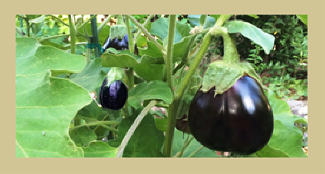
Welcome to Brinjal Crop management and Diagnostic solutions
Brinjal Cultivation : : Soil , Climate & Season

 Soil
& Climate : Though brinjal can be grown on
all types of soils, generally, well drained sandy-loam and clay-loam
soils are preferred for brinjal cultivation. The soil should be
deep, fertile and well drained. A soil pH of 5.5 to 6.0 is good for
better growth of brinjal. Brinjal is warm season crop and
susceptible to frost. Climatic conditions especially low temperature
during the cool season cause abnormal development of the ovary in
flower bud, which then differentiate and develop into deformed
fruits.
Soil
& Climate : Though brinjal can be grown on
all types of soils, generally, well drained sandy-loam and clay-loam
soils are preferred for brinjal cultivation. The soil should be
deep, fertile and well drained. A soil pH of 5.5 to 6.0 is good for
better growth of brinjal. Brinjal is warm season crop and
susceptible to frost. Climatic conditions especially low temperature
during the cool season cause abnormal development of the ovary in
flower bud, which then differentiate and develop into deformed
fruits.
Season : Brinjal is a warm season crop and requires a long warm growing season. It is very Susceptible to frost. Though it can be grown throughout the year, June-July, October- November and January-February (in Bangalore/South Indian condition) are suitable months for sowing. However, sowing and transplanting time differ as per agro-climatic conditions. In the northern plains of India, mainly two sowings of autumn-winter (June-July) and spring (October-November) crops are taken. Sowing time in central and southern India is July-August and December-January. In hilly regions, seed is sown in March-April and seedlings are transplanted in May. A long and warm growing season is desirable for successful brinjal production. A daily mean temperature of 13 degree C to 21 degree C is most favorable for the successful production.
